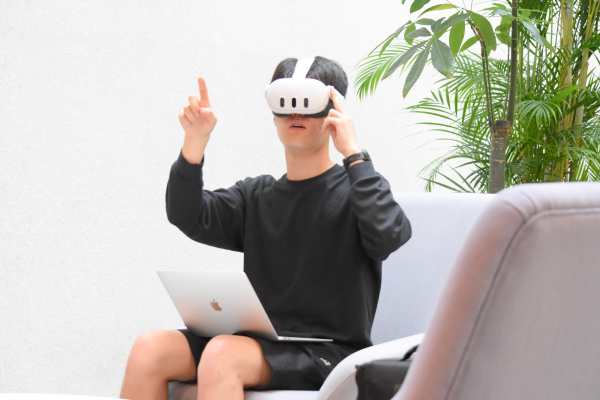
The recent commercialization of Virtual Reality (VR) technology is stirring up the public with its potential to bring all kinds of extraordinary experiences to life. When it comes to education, VR technology enables students to visualize abstract concepts or conduct infeasible experiments in virtual space, offering intuitive understanding and immersive, interactive learning experiences.
Recognizing this potential, POSTECH is the world’s first university to provide VR devices to all undergraduate students and is currently leading the VR education initiative worldwide. “This initiative is not merely about distributing hardware,” says Professor Wooksung Kim (EE), head of the Metaversity Education Office in the Innovation Center for Education. “It represents one of the world’s most proactive responses to a new educational paradigm.”
An increasing number of professors are actively engaged in creating interactive educational content using VR, especially for learning abstract concepts that students cannot physically experience. Professor Eun-young Youn (CSE) developed a model called “Immersive Learning for Programming Problem Solving (ILPPS)”. A representative example of this model is the “Tower of Hanoi VR game”, designed to help students intuitively understand recursive algorithms. She mentioned that students’ responses were remarkably positive and plans to expand the model to cover a broader range of programming concepts.
Prof. Kim also developed VR content that focuses on visualizing intangible concepts such as electromagnetism, optics, and biomedical signal measurement. He explained that students can tangibly experience and interact with phenomena like electrostatic field distributions or wave interference, and that this spatial and interactive approach can significantly enhance conceptual understanding and long-term memory retention.
However, there are still numerous difficulties in developing and utilizing VR content in classes. Many students reported the discomfort of wearing a VR device, mentioning fatigue caused by the weight of the device and dizziness as primary setbacks. Content development is also an obstacle, with just a few professors putting in significant effort to make sure educational benefits outweighing such inconvenience are realized.
Despite the difficulties, the VR-based education system is rapidly taking hold in POSTECH. In 2024, the POSTECH Metaversity Portal (metaversity.postech.ac.kr), a platform for uploading completed VR content, was newly launched. It will allow students to access VR contents more conveniently and be more familiar with them. A promotion event was recently held in May to encourage more students to install the portal.
Currently, about ten courses either have implemented or are developing VR content under the guidance of the Metaversity Education Office. “The foundation for providing all undergraduates with VR learning experiences is in place. From the 2025 fall semester, at least one VR-integrated course will be offered in every department. By 2026, we expect that nearly all undergraduates will have experienced at least one VR-integrated class,” Prof. Kim stated.
POSTECH envisions a futuristic learning environment where students can experiment, design, and collaborate beyond limitations of time or space. Unlike current lecture-based classes, future classes will emphasize student-led, design-oriented, and interactive learning, with VR technologies playing a critical role in this transition. Soon, Postechians using these tools for a wide range of purposes including academic projects, personal interests, and social initiatives will be a common sight, enabling seamless virtual interaction in both academic and everyday contexts.


